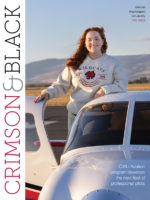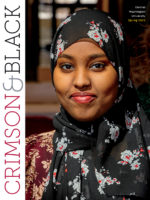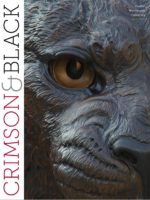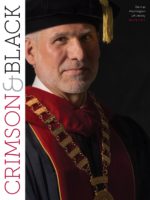
Keith Lewis is having a fantastic year. The CWU Distinguished Professor of Jewelry, Metals, and Design has received international acclaim for his art, with six of his pieces being on display at the New York Museum of Art and Design, and a solo exhibition in April at the Jewelry Library in Hell’s Kitchen.

Lewis discusses 35 years of his work in Dead Souls
Lewis’ monograph, Dead Souls: Desire and Memory in the Jewelry of Keith Lewis, written in collaboration with art historian Damien Skinner, chronicles his 35-year career as a jeweler and examines his work from a modern perspective. It was presented at Munich Jewelry Week in Germany in March, alongside selections from his extensive catalog of art.
Lewis’ experience working on the monograph led him to reflect on his lifetime’s work from a new perspective, one often mired in ongoing political and cultural conflict.
“I came out as a gay man and began making jewelry about that experience in the ’80s, in the midst of the AIDS epidemic,” Lewis said. “That created a kind of clarity, a focus on survival that really shaped the way I think about things to this day.
“As we have moved through the last several decades, we have developed a truer and more nuanced understanding of the intersections of gender identity and sexuality, which includes trans issues and non-binary issues and, in general, a better idea of the range of sexualities within those broader and more multitudinous sets of identities.”

Lewis uses a variety of jewelry-making techniques, which require a broad range of tools.
As a member of the heavily marginalized LGBTQ+ community during a time of repression and underrepresentation, the importance of Lewis’ artwork resides not only in expressing his own internal turmoil, but also in helping build bridges between people forced to keep their true selves to themselves.
The lessons Lewis learned from holding this delicate balance are passed on to his students.
“The thing with our individual problems is that they’re all very important and salient and painful to us, but they also happen all the time,” he said. “We all walk through misery. The trick is in learning how to create objects that establish a connection with other people about those shared experiences, or shared pain. How do you expand that discourse so that people with non-identical experiences can still find communion through your art?”

In Lewis’ classroom, he prefers to teach the delicate craft of creating dialogue through art using other artists’ pieces, as opposed to his own.
“I’m a perfectly egotistical teacher, but I almost never teach from my own work,” he said. “Rather, I try to bring my experience as a jeweler working with controversial subjects and narratives; things that people often get very fired-up about. I try to teach my students how to grapple with that without just making propaganda or bleeding all over their artwork.”
Lewis’ accolades over the past year come on the heels of decades of networking, inspiration, and thoughtful reactivity to changing times. His art has, over the years, been featured in exhibitions across the world, and his unique talent recently led to his induction as a Fellow of the American Craft Council.

“There are all these threads you spin over the course of a career as long as mine,” Lewis said. “It feels like those threads are really coming together now.”
As the steward of the only dedicated four-year jewelry degree in Washington state, Lewis builds on CWU’s extensive record of excellence in the field.
Since the 1950s, each professor who taught jewelry at Central has earned international acclaim for their work, starting with Ramona Solberg, remembered as the grandmother of Northwest found-art jewelry. The post was then held by Don Tompkins and Ken Corey, both prolific jewelers in their own right. Looking back at this heritage of excellence, Lewis is proud to continue that legacy.
“There’s no modest way to say this, but four internationally renowned jewelry professors in a row with no breaks since the late ’50s is no mean feat,” he said. “I’m honored and elated to have been able to continue that tradition.”






comments powered by Disqus